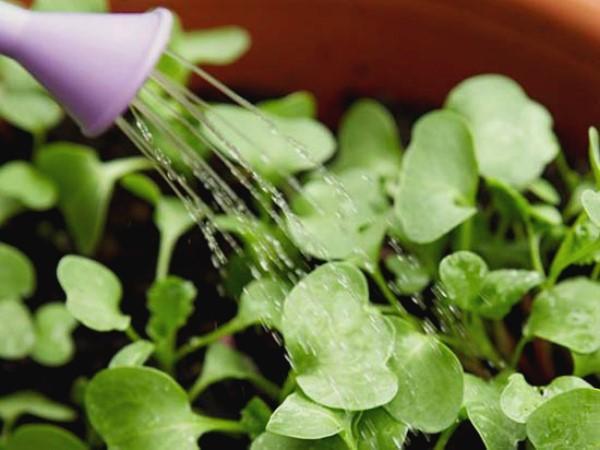What kind of care does a radish need?
 Radish will not cause much trouble for gardeners, because it is not a very capricious culture and, with the right approach, will soon delight you with juicy, tasty and healthy roots. The sown seeds usually sprout quickly and after 7-10 days the first sprouts appear in the garden.
Radish will not cause much trouble for gardeners, because it is not a very capricious culture and, with the right approach, will soon delight you with juicy, tasty and healthy roots. The sown seeds usually sprout quickly and after 7-10 days the first sprouts appear in the garden.
In order for the radish to grow large and juicy, you need to take care of it quite a bit, however, like the rest of the garden crops. Crop care includes activities such as:
- thinning of seedlings;
- timely removal of weeds;
- periodic watering;
- nutritious feeding.
Thinning
Thickened plantings do not allow the radish to grow root crops, so it is important to thin out the seedlings in time. This must be done twice:
- when the radish forms two leaves, break through the seedlings, leaving one plant every 6 cm;
- repeat the procedure after three to four weeks.
Some gardeners, in order to avoid thinning, prefer to immediately sow seeds in prepared holes under a marker. However, in this case, there is a possibility that not all seeds will sprout, and then voids will form in the beds.
Garden bed care
So that the plantings, especially young ones, do not drown out the weeds, the latter must be removed in a timely manner. At the same time, the beds are loosened with a hoe, thus providing free access of air and moisture to the roots. Loosening the soil is also necessary after each watering or rain so that the aisles are not crusty.
During the growing season, the beds must be loosened at least 4 times, each time increasing the depth:
- for the first time, 4 cm will be enough;
- for the second - twice as deep;
- the next two loosening should be carried out to a depth of at least 10 cm.
Watering frequency
How juicy the root vegetables will be depends on whether there was enough moisture in the garden. To do this, the radish should be watered, while the frequency of watering depends on the sowing time:
- spring plantings need weekly watering;
- varieties planted in summer for winter storage, four waterings per season are enough.
From a lack of moisture, roots become fibrous and hard, and abundant watering after a drought leads to cracking.
Top dressing
Unlike most crops, radish needs nitrogen fertilizers, especially early maturing varieties. They need to be fed with sodium nitrate twice per season:
- when cotyledonous leaves appear;
- 7 days after the first feeding.
As for winter varieties, nitrogen fertilizing can be alternated with complex mineral fertilizers, which include superphosphate, urea and potassium chloride. All fertilization must be stopped 20 days before harvest.